Adhesion phenomena
Spontaneous adhesion is especially dangerous in MEMS because of their small dimensions, typically large surface-to-volume ratios, small elastic restoring forces due to microbeam slenderness and close proximity of adjacent surfaces. Recently, we carried out a broad experimental campaign, based on an automatic procedure which is able to obtain the adhesion force (in the usual pull-in/pull-off conditions) for a huge number of cycles with different kinetic energy at the impact. The following figure shows the designed device, which is really compact and was studied in order to provide inline monitoring of adhesion force for MEMS in realistic operating conditions.
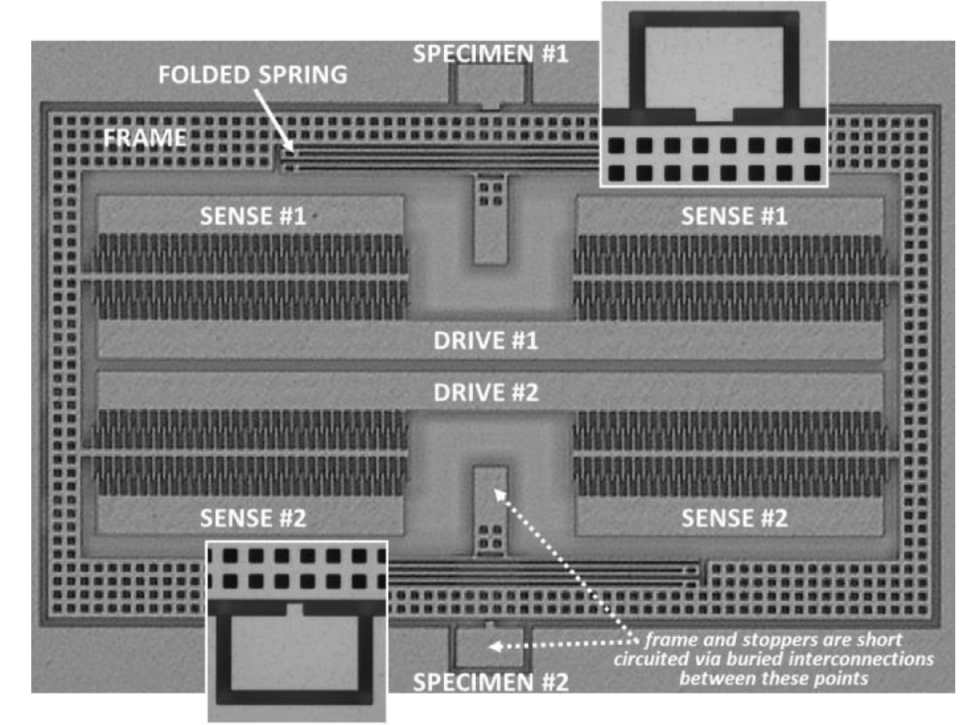
At the meso scale the detaching energy between rough surfaces is computed by using finite element elastic-plastic analyses with adhesive contact for typical artificially generated rough surfaces. 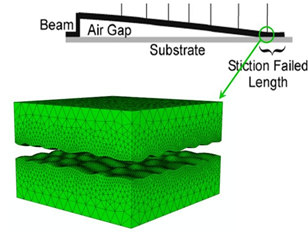
FE model for a typical artificially generated rough surface
We developed an adhesive contact model able to estimate the capillary attraction and the "dispersion" forces. The capillarity attraction depends on the relative humidity, temperature, surface gap and the shape of asperities.
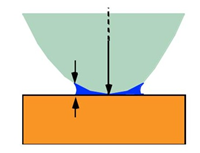
Graphical representation of the meniscus between a spherical asperity and a flat surface
The "dispersion" forces depend on the material features, surface gap and surface geometry.
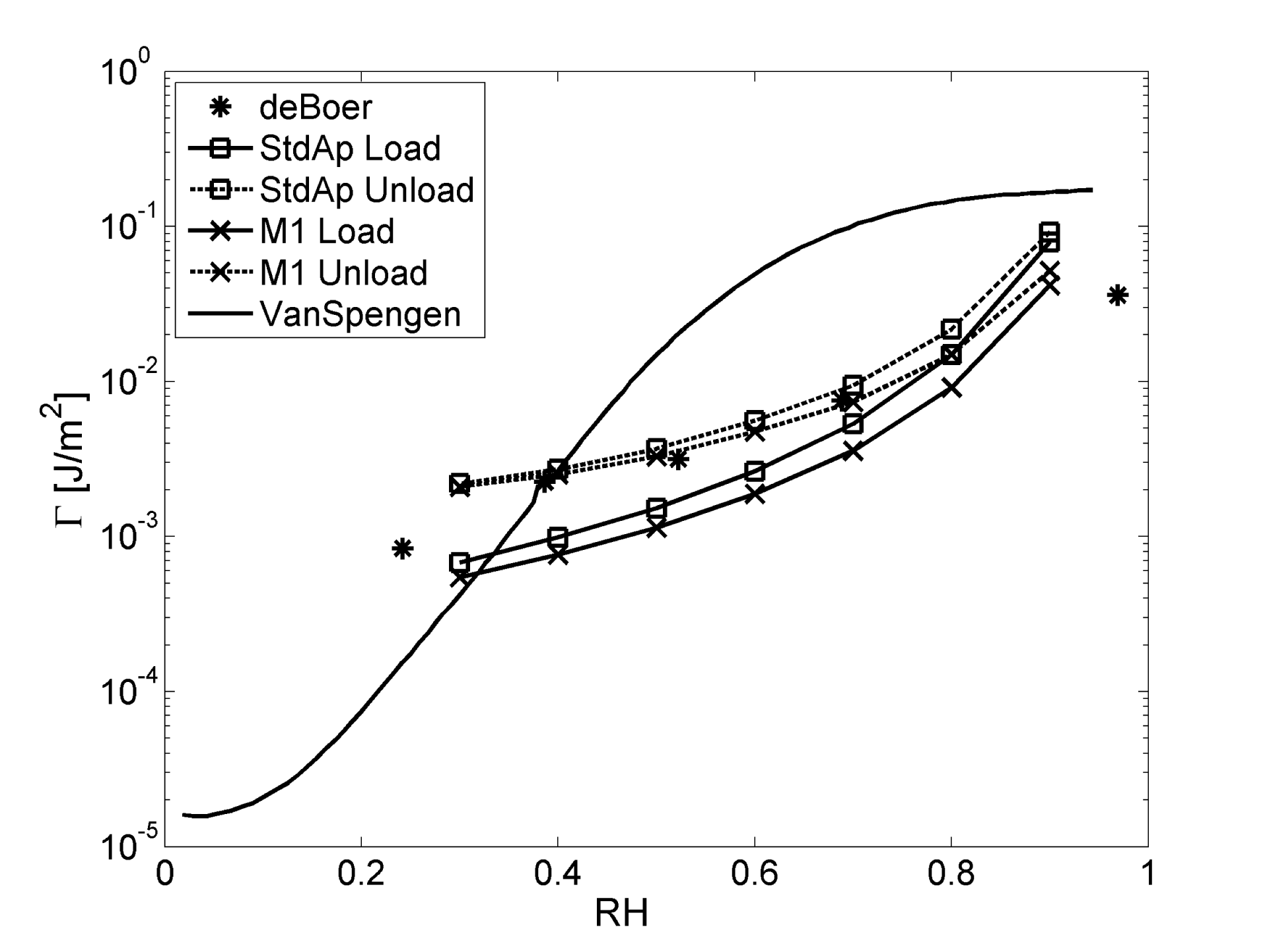
Adhesion energy vs. relative humidity for a surface of roughness 2 nm RMS: comparison of experimental data, from De Boer (2007), and numerical outcomes, from Ardito et al. (2016)
Both Van der Waals and Casimir forces could play an important role in adhesion phenomena. The influence of Casimir force on the mechanical behaviour of micro-electro-mechanical systems has been studied, performing experimental tests with ad-hoc devices, considering two parallel plates, separate by sub-micro gap. The results of the tests have been compared with theoretical predictions.
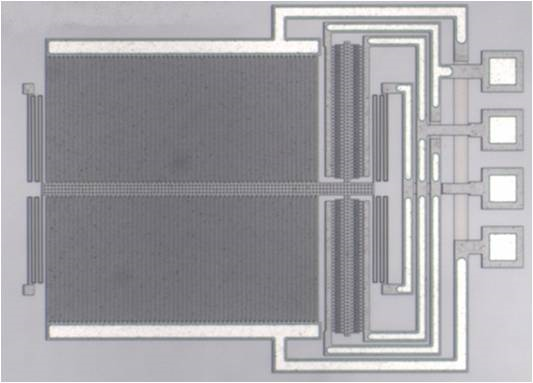
Casimir forces: experimental device
The “retarded regime” induced by van der Waals forces, which causes the “retarded” polarization of nearby becomes relevant for separations ranging from 20÷50 nm to 300÷400 nm.
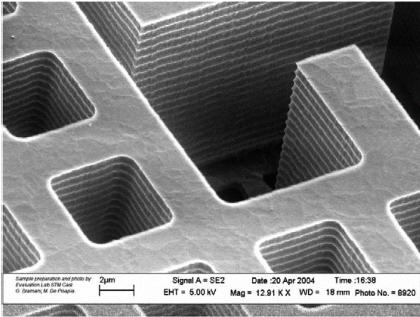
Micro-asperities of vertical surfaces
